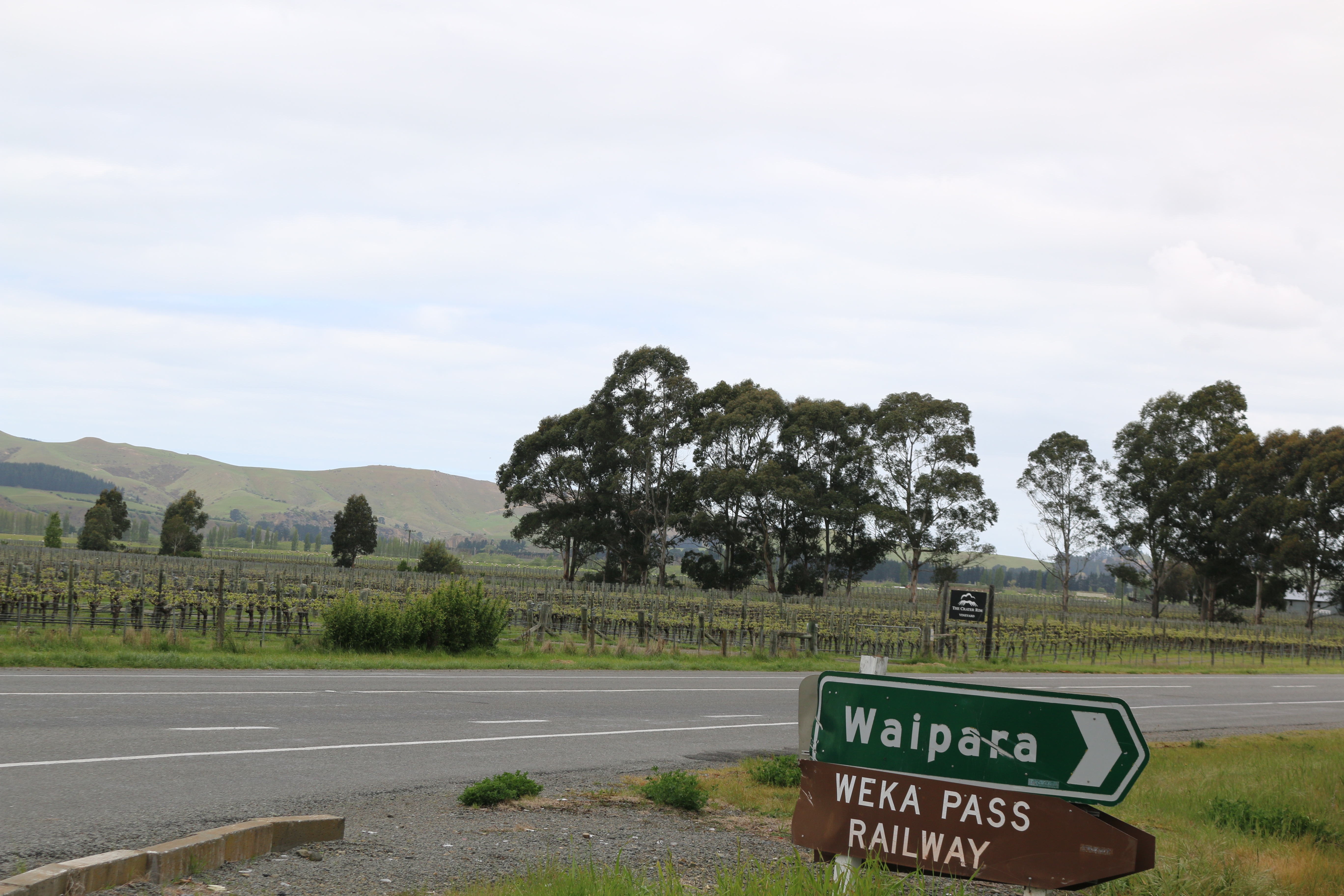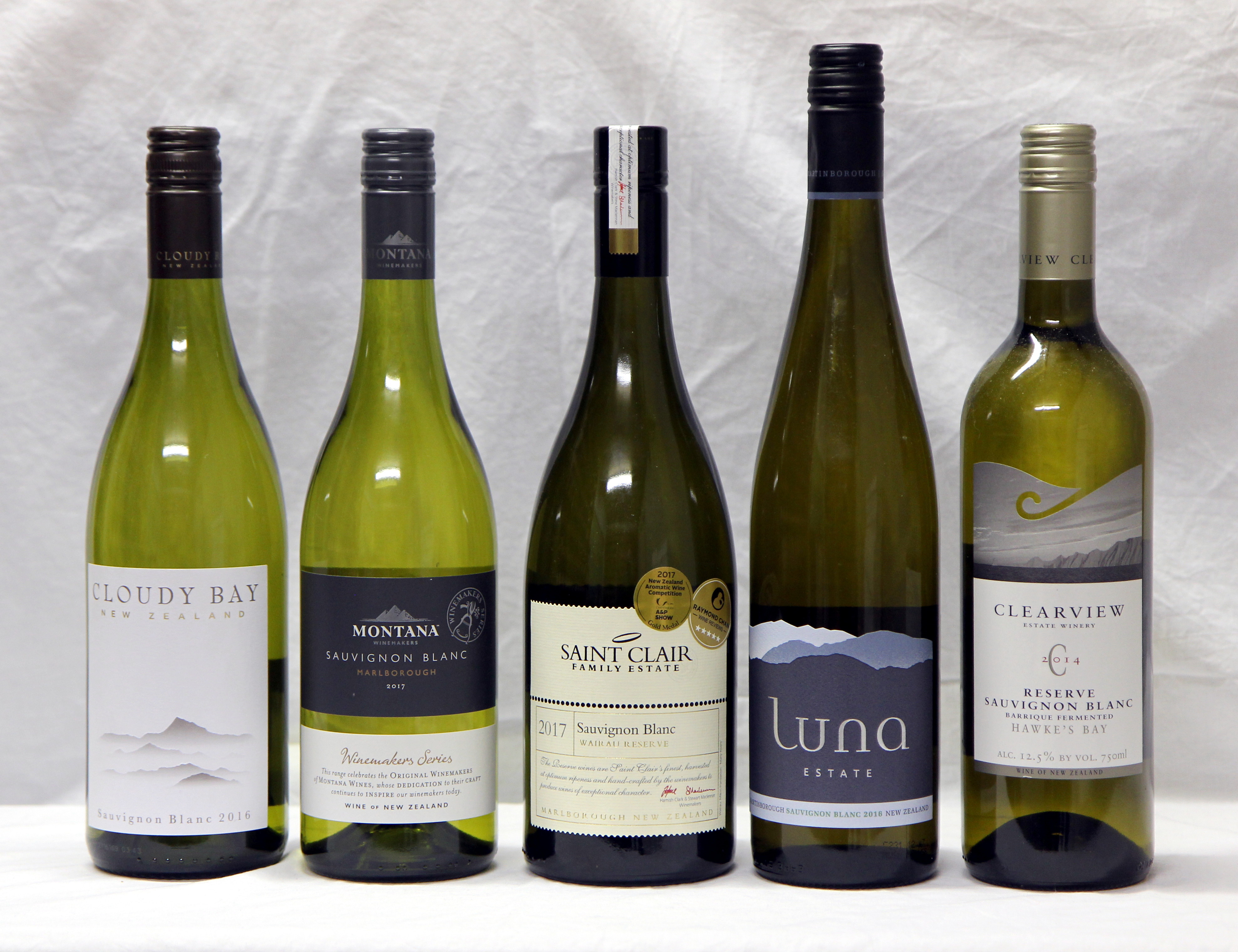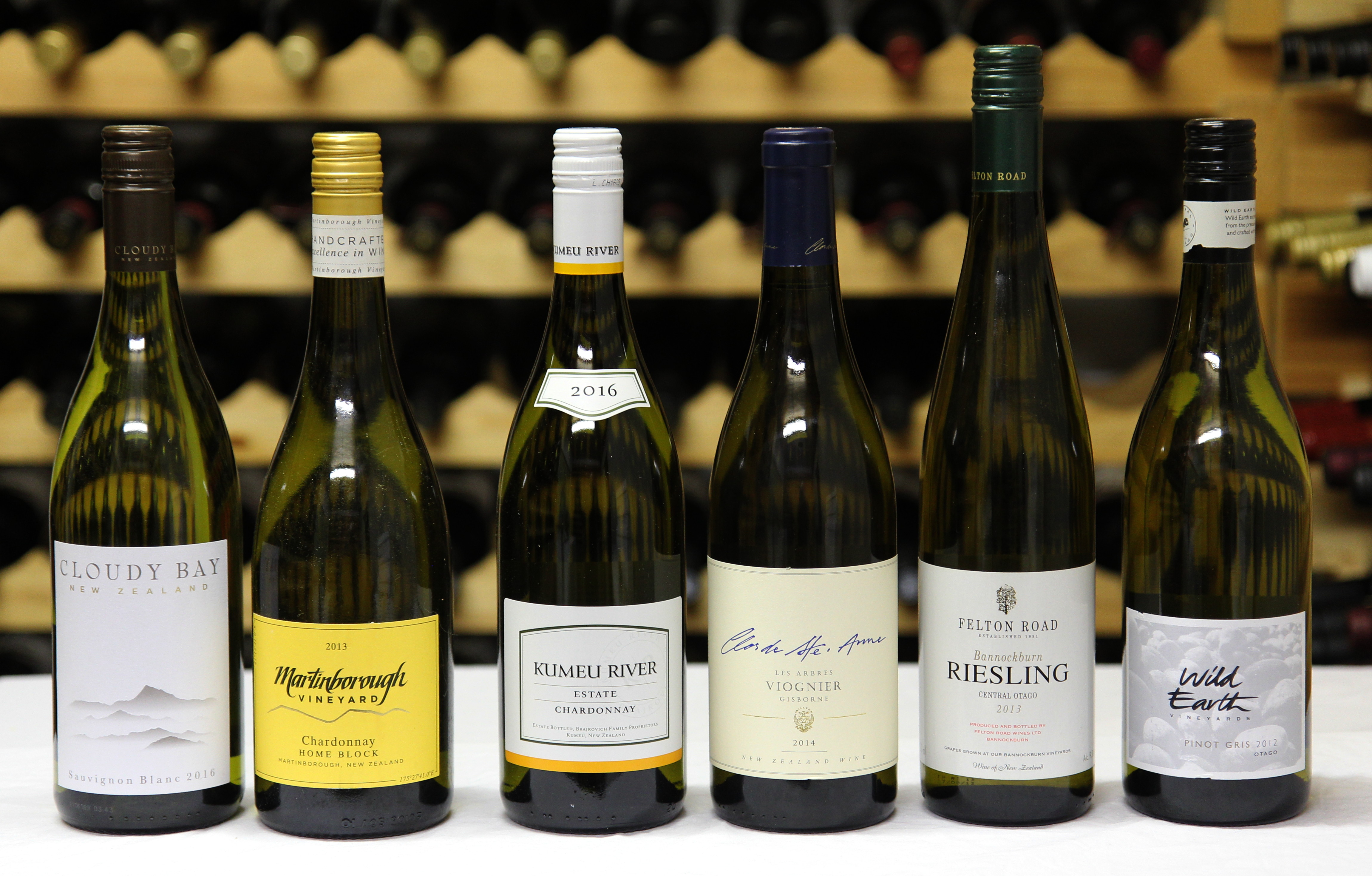|
Pegasus Bay Vineyards
Pegasus Bay is a family owned and operated vineyard and winery based in Waipara, New Zealand. Pegasus Bay winery is the second largest winery in Canterbury and considered within the New Zealand wine industry as a standard setter for the industry in the region and rated 'Canterburys top winery' by Michael Cooper in the Wine Atlas of New Zealand 2003. The winery was set up by Ivan Donaldson in 1986 and run by his family. Mr Donaldson is also the wine columnist for ''The Press'' newspaper in Christchurch. Wine styles Pegusus Bay produce: * Sauvignon blanc/ Semillon * Pinot noir * Merlot Cabernet * Riesling * Chardonnay See also * New Zealand wine *Pegasus Bay Pegasus Bay, earlier known as Cook's Mistake, is a bay on the east coast of the South Island of New Zealand, to the north of Banks Peninsula. Toponymy Pegasus Bay takes its name from the brig ''Pegasus'', a sealing ship that was sailing fro ... References SourcesFine wines of New ZealandPegasus Bay Vineyards< ... [...More Info...] [...Related Items...] OR: [Wikipedia] [Google] [Baidu] |
Waipara, New Zealand
Waipara is a small town in north Canterbury, New Zealand, on the banks of the Waipara River (Canterbury), Waipara River. Its name translates to "Muddy Water", ''wai'' meaning water and ''para'' meaning mud. It is at the junction of New Zealand State Highway 1, state highways 1 and New Zealand State Highway 7, 7, 60 kilometres north of Christchurch. Hanmer Springs is 76 kilometres (55 minutes drive) north of Waipara. It is also situated on the Main North Line, New Zealand, Main North Line railway. Waipara lies at one of the points of the Alpine Pacific Triangle, which also includes the major tourist centers of Hanmer Springs and Kaikoura. The Weka Pass Railway has its base in Waipara, and runs on 12 kilometres of track between there and Waikari over the former route of the Waiau Branch, a branch line railway that diverged from the Main North Line and ran to Waiau, Canterbury, Waiau. The Glenmark station is based in Waipara. The Glenmark church has closed down. It was damaged ... [...More Info...] [...Related Items...] OR: [Wikipedia] [Google] [Baidu] |
Christchurch
Christchurch ( ; mi, Ōtautahi) is the largest city in the South Island of New Zealand and the seat of the Canterbury Region. Christchurch lies on the South Island's east coast, just north of Banks Peninsula on Pegasus Bay. The Avon River / Ōtākaro flows through the centre of the city, with an urban park along its banks. The city's territorial authority population is people, and includes a number of smaller urban areas as well as rural areas. The population of the urban area is people. Christchurch is the second-largest city by urban area population in New Zealand, after Auckland. It is the major urban area of an emerging sub-region known informally as Greater Christchurch. Notable smaller urban areas within this sub-region include Rangiora and Kaiapoi in Waimakariri District, north of the Waimakariri River, and Rolleston and Lincoln in Selwyn District to the south. The first inhabitants migrated to the area sometime between 1000 and 1250 AD. They hunted moa, which led ... [...More Info...] [...Related Items...] OR: [Wikipedia] [Google] [Baidu] |
1986 Establishments In New Zealand
The year 1986 was designated as the International Year of Peace by the United Nations. Events January * January 1 ** Aruba gains increased autonomy from the Netherlands by separating from the Netherlands Antilles. **Spain and Portugal enter the European Community, which becomes the European Union in 1993. *January 11 – The Gateway Bridge in Brisbane, Australia, at this time the world's longest prestressed concrete free-cantilever bridge, is opened. * January 13– 24 – South Yemen Civil War. * January 20 – The United Kingdom and France announce plans to construct the Channel Tunnel. *January 24 – The Voyager 2 space probe makes its first encounter with Uranus. * January 25 – Yoweri Museveni's National Resistance Army Rebel group takes over Uganda after leading a five-year guerrilla war in which up to half a million people are believed to have been killed. They will later use January 26 as the official date to avoid a coincidence of dates with Dictator Idi Amin's ... [...More Info...] [...Related Items...] OR: [Wikipedia] [Google] [Baidu] |
Pegasus Bay
Pegasus Bay, earlier known as Cook's Mistake, is a bay on the east coast of the South Island of New Zealand, to the north of Banks Peninsula. Toponymy Pegasus Bay takes its name from the brig ''Pegasus'', a sealing ship that was sailing from Hobart to London via the ''sealing islands'' and was surveying this part of the South Island in 1809. Attempting to sail into Gore's Bay shown on Captain Cook's map between the supposed ''Island'' that Cook had named after Banks, the crew discovered a mistake in Cook's chart and found the island was a peninsula connected to the rest of the South Island mainland by a low-lying isthmus. Fortunately they discovered this before trying to pass between the supposed island and the mainland before dark while approaching from the north and were still in about of water. Captain Chace (or Chase) and his first officer William Stewart, who had also surveyed Stewart Island on the same journey, were reported in the Oriental Navigator in 1816. Charts ma ... [...More Info...] [...Related Items...] OR: [Wikipedia] [Google] [Baidu] |
New Zealand Wine
New Zealand wine is produced in several of its distinct winegrowing regions. As an island country in the South Pacific Ocean, New Zealand has a largely maritime climate, although its elongated geography produces considerable regional variation from north to south. Like many other New World wines, New Zealand wine is usually produced and labelled as single varietal wines, or if blended, winemakers list the varietal components on the label. New Zealand is best known for its Marlborough Sauvignon Blanc, and more recently its dense, concentrated Pinot Noir from Marlborough, Martinborough and Central Otago. While New Zealand wine traces its history to the early 19th century, the modern wine industry in New Zealand began in the mid-20th century and expanded rapidly in the early 21st century, growing by 17% a year from 2000 to 2020. In 2020, New Zealand produced from of vineyard area, of which ha (about two-thirds) is dedicated to Sauvignon Blanc. Nearly 90% of total production is ... [...More Info...] [...Related Items...] OR: [Wikipedia] [Google] [Baidu] |
Merlot Cabernet
Merlot is a dark blue–colored wine grape variety This list of grape varieties includes cultivated grapes, whether used for wine, or eating as a table grape, fresh or dried (raisin, currant, sultana). For a complete list of all grape species including those unimportant to agriculture, see Viti ..., that is used as both a blending grape and for varietal wines. The name ''Merlot'' is thought to be a diminutive of ''merle'', the French language, French name for the Common Blackbird, blackbird, probably a reference to the color of the grape. Its softness and "fleshiness," combined with its earlier ripening (wine), earlier ripening, make Merlot a popular grape for blending with the sterner, later-ripening Cabernet Sauvignon, which tends to be higher in grape tannins, tannin. Along with Cabernet Sauvignon, Cabernet Franc, Malbec and Petit Verdot, Merlot is one of the primary grapes used in Bordeaux wine, and it is the most widely planted grape in the Bordeaux wine regions. Mer ... [...More Info...] [...Related Items...] OR: [Wikipedia] [Google] [Baidu] |
Pinot Noir
Pinot Noir () is a red-wine grape variety of the species ''Vitis vinifera''. The name may also refer to wines created predominantly from pinot noir grapes. The name is derived from the French language, French words for ''pine'' and ''black.'' The word ''pine'' alludes to the grape variety having tightly clustered, pinecone–shaped bunches of fruit. Pinot Noir grapes are grown around the world, mostly in cooler climates, and the grape is chiefly associated with the Burgundy (wine), Burgundy region of France (wine), France. Pinot Noir is now used to make red wines around the world, as well as champagne, Sparkling wine, sparkling white wines such as the Italian wine, Italian Franciacorta, and Wine from the United Kingdom, English sparkling wines. Regions that have gained a reputation for red pinot noir wines include the Willamette Valley (wine), Willamette Valley of Oregon (wine), Oregon; the Carneros (AVA), Carneros, Central Coast (AVA), Central Coast, Sonoma Coast AVA, Sonoma ... [...More Info...] [...Related Items...] OR: [Wikipedia] [Google] [Baidu] |
Sauvignon Blanc
is a green-skinned grape variety that originates from the Bordeaux region of France. The grape most likely gets its name from the French words ''sauvage'' ("wild") and ''blanc'' ("white") due to its early origins as an indigenous grape in South West France. It is possibly a descendant of Savagnin. is planted in many of the world's wine regions, producing a crisp, dry, and refreshing white varietal wine. The grape is also a component of the famous dessert wines from Sauternes and Barsac. Sauvignon blanc is widely cultivated in France, Chile, Romania, Canada, Australia, New Zealand, South Africa, Bulgaria, the states of Oregon, Washington, and California in the US. Some New World Sauvignon blancs, particularly from California, may also be called "Fumé Blanc", a marketing term coined by Robert Mondavi in reference to Pouilly-Fumé. Depending on the climate, the flavor can range from aggressively grassy to sweetly tropical. In cooler climates, the grape has a tendency to pr ... [...More Info...] [...Related Items...] OR: [Wikipedia] [Google] [Baidu] |
The Press
''The Press'' is a daily newspaper published in Christchurch, New Zealand owned by media business Stuff Ltd. First published in 1861, the newspaper is the largest circulating daily in the South Island and publishes Monday to Saturday. One community newspaper—''Northern Outlook''- is also published by ''The Press'' and is free. The newspaper has won the title of New Zealand Newspaper of the Year (in its circulation category) three times: in 2006, 2007 and 2012. It has also won the overall Newspaper of the Year title twice: in 2006 and 2007. History James FitzGerald came to Lyttelton on the ''Charlotte Jane'' in December 1850, and was from January 1851 the first editor of the ''Lyttelton Times'', Canterbury's first newspaper. From 1853, he focussed on politics and withdrew from the ''Lyttelton Times''. After several years in England, he returned to Canterbury concerned about the proposed capital works programme of the provincial government, with his chief concern the pro ... [...More Info...] [...Related Items...] OR: [Wikipedia] [Google] [Baidu] |
North Canterbury Wine Region
New Zealand wine is produced in several of its distinct winegrowing regions. As an island country in the South Pacific Ocean, New Zealand has a largely maritime climate, although its elongated geography produces considerable regional variation from north to south. Like many other New World wines, New Zealand wine is usually produced and labelled as single varietal wines, or if blended, winemakers list the varietal components on the label. New Zealand is best known for its Marlborough Sauvignon Blanc, and more recently its dense, concentrated Pinot Noir from Marlborough, Martinborough and Central Otago. While New Zealand wine traces its history to the early 19th century, the modern wine industry in New Zealand began in the mid-20th century and expanded rapidly in the early 21st century, growing by 17% a year from 2000 to 2020. In 2020, New Zealand produced from of vineyard area, of which ha (about two-thirds) is dedicated to Sauvignon Blanc. Nearly 90% of total production is ... [...More Info...] [...Related Items...] OR: [Wikipedia] [Google] [Baidu] |
Waipara
Waipara is a small town in north Canterbury, New Zealand, on the banks of the Waipara River. Its name translates to "Muddy Water", ''wai'' meaning water and ''para'' meaning mud. It is at the junction of state highways 1 and 7, 60 kilometres north of Christchurch. Hanmer Springs is 76 kilometres (55 minutes drive) north of Waipara. It is also situated on the Main North Line railway. Waipara lies at one of the points of the Alpine Pacific Triangle, which also includes the major tourist centers of Hanmer Springs and Kaikoura. The Weka Pass Railway has its base in Waipara, and runs on 12 kilometres of track between there and Waikari over the former route of the Waiau Branch, a branch line railway that diverged from the Main North Line and ran to Waiau. The Glenmark station is based in Waipara. The Glenmark church has closed down. It was damaged during the 2010 Christchurch earthquakes. The Waipara Hotel burnt down in 2014. It was not insured at the time and has not been r ... [...More Info...] [...Related Items...] OR: [Wikipedia] [Google] [Baidu] |







